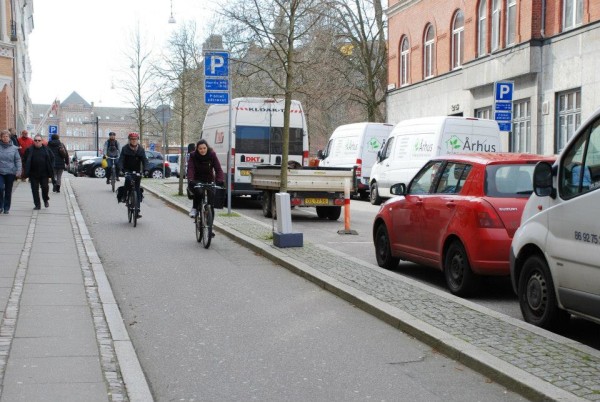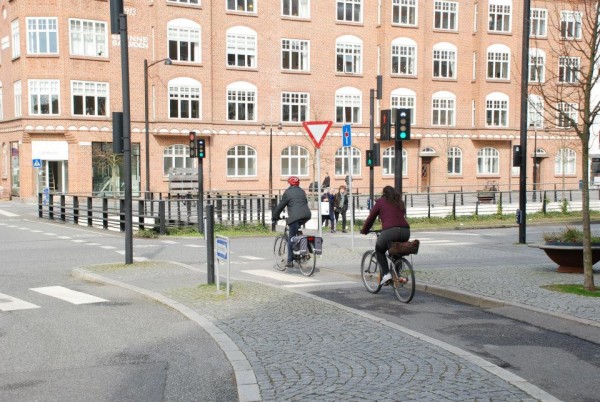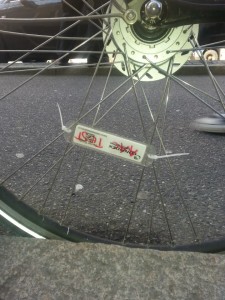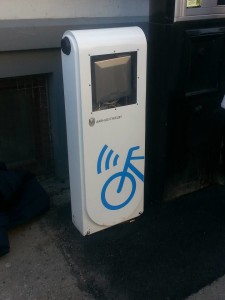This is almost like a dream come true for bike commuters. A device that not only triggers the light to turn green, but actually gives the cyclist 1st priority! Who would want to drive a car with that kind of bonus for bikes? That is exactly what RADICAL (RApid Deployment of Intelligent Cities and Living), hopes to accomplish through their “Living Labs” in Aarhus, Demark.
Pass through the green light to see how this system works and why it could quickly transform city streets in a short period of time……

Everyone is trying to make things “smart”. Phones, cars, bikes, televisions, watches, homes and just about anything we interact with. So why not have a “smart city”? RADICAL looks for ways to take advantage of cities’ increasing ICT infrastructures (Information and Communications Technology such as WiFi and Broadband services), to develop ways to decrease the city’s carbon footprint and Aarhus was a perfect testing ground.
Its no secret that bikes already have an advantage on inner city traffic since they can pass right by cars backed up in stand-still traffic. So what if you give cyclists a device that turns the light green so you don’t have to stop? RADICAL has partnered with Aarhus, the second largest city in Denmark, and set up a “living lab” where they have placed transmitting devices in popular areas that sense a small powerless RFID tag (Radio Frequency Identification), that can be put on a bicycle. Once the transmitter picks up the tag, it sends a signal to the traffic light to make sure the light is green as the cyclist approaches it. The “lab” consists of 200 cyclists that were given the small powerless sensor to test how well it works.
The idea behind this seems to be if a person commuting to work realizes that they can get somewhere twice as fast if they use a bike, they will be far more likely to jump on a 2-wheeler thus reducing the amount of traffic and carbon footprint. This could be something that gets realized pretty fast based on how time focused our society has become. Plus, if more people ride, the demand for improved bicycle-friendly infrastructure will grow along with them.


